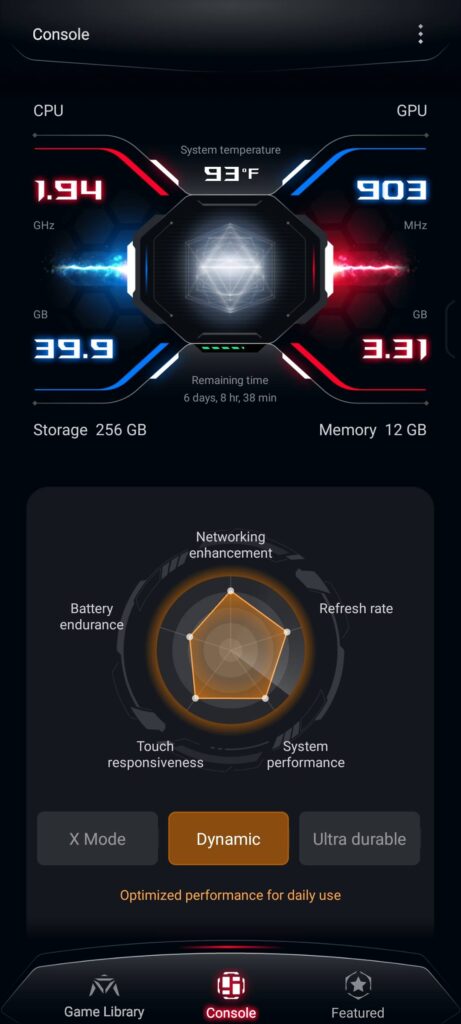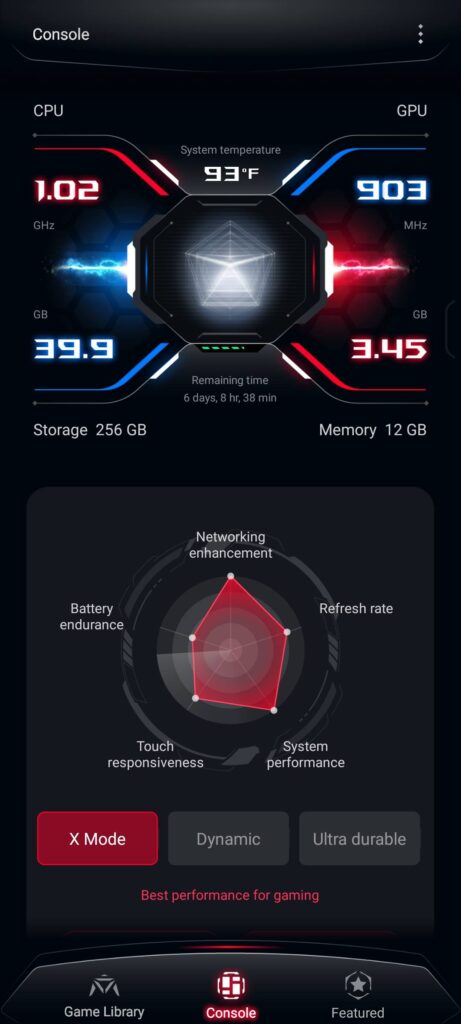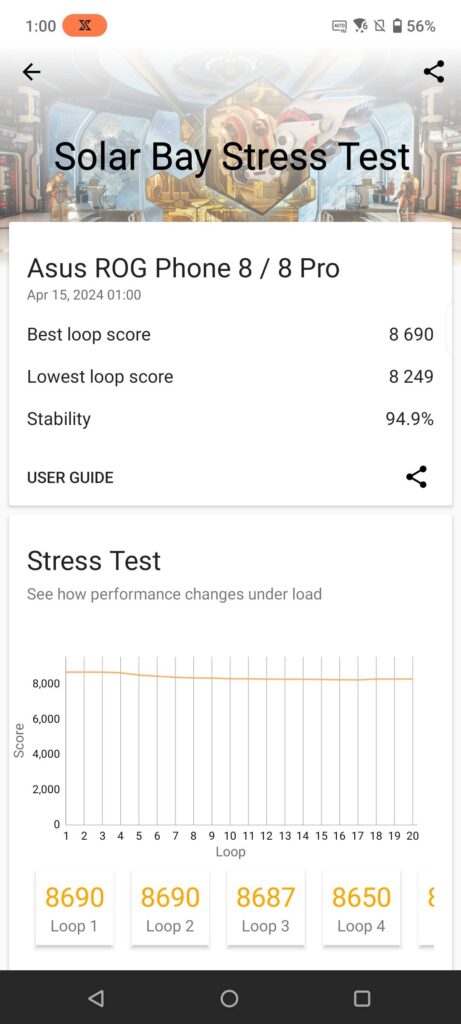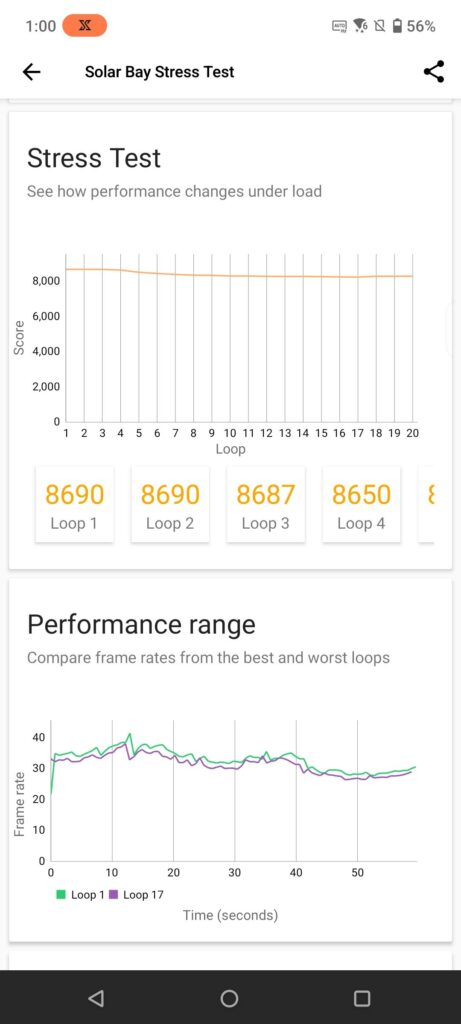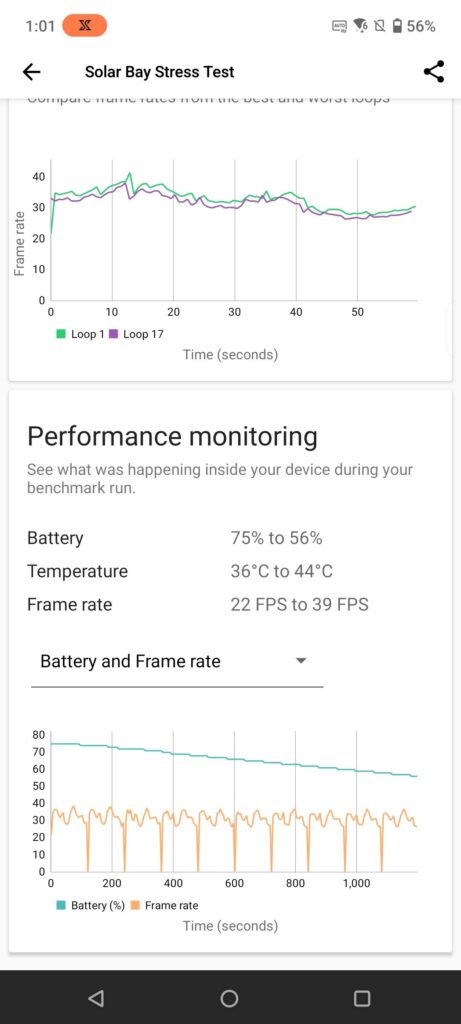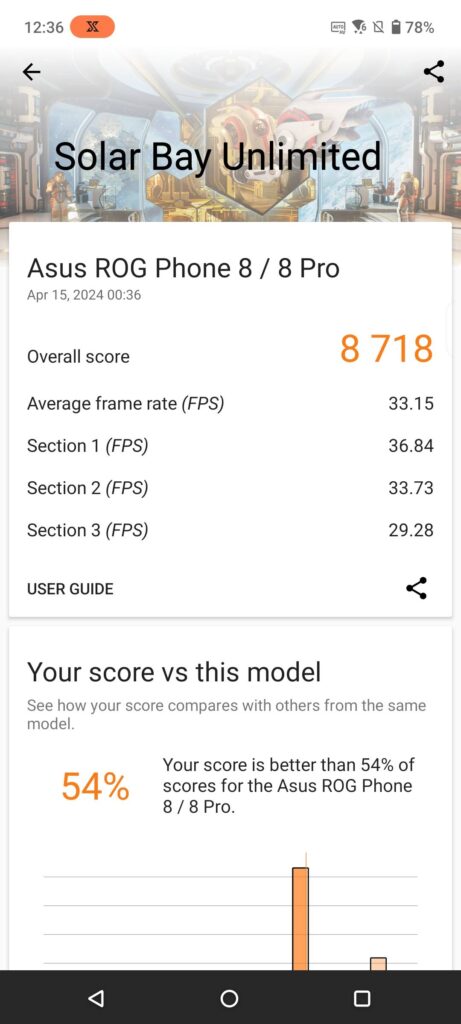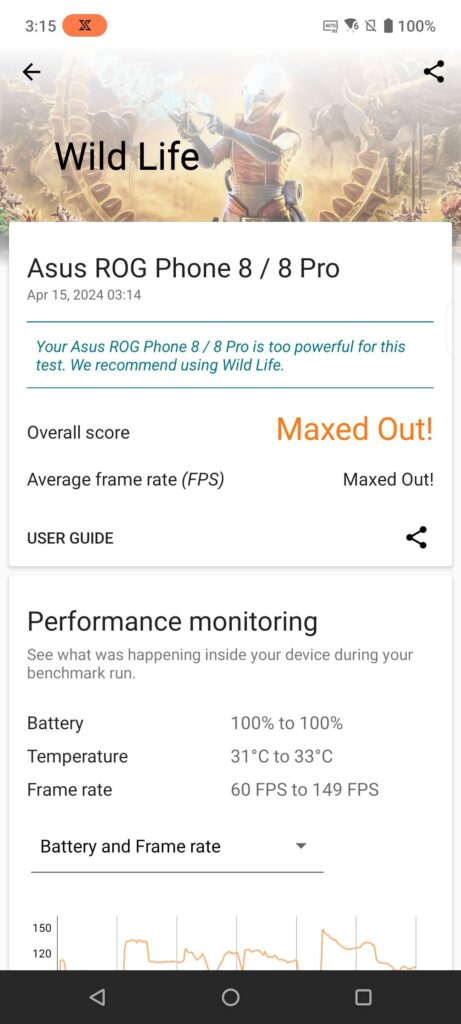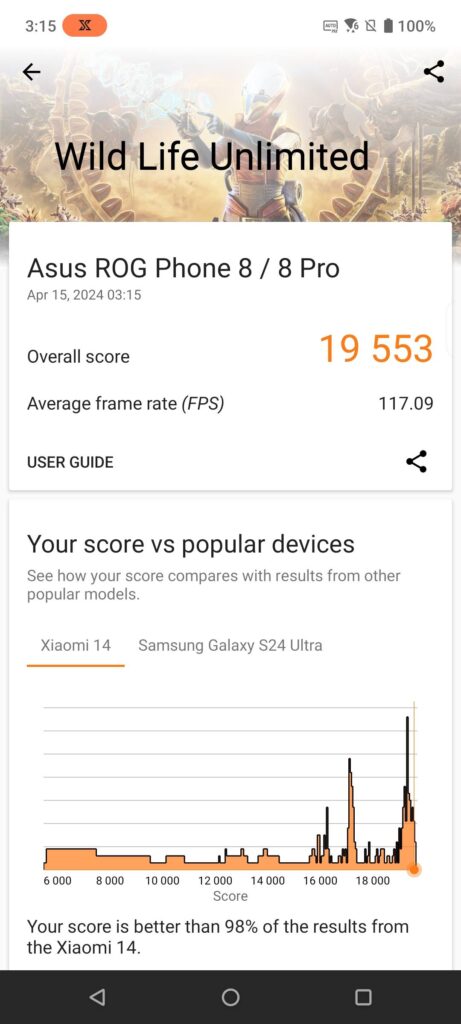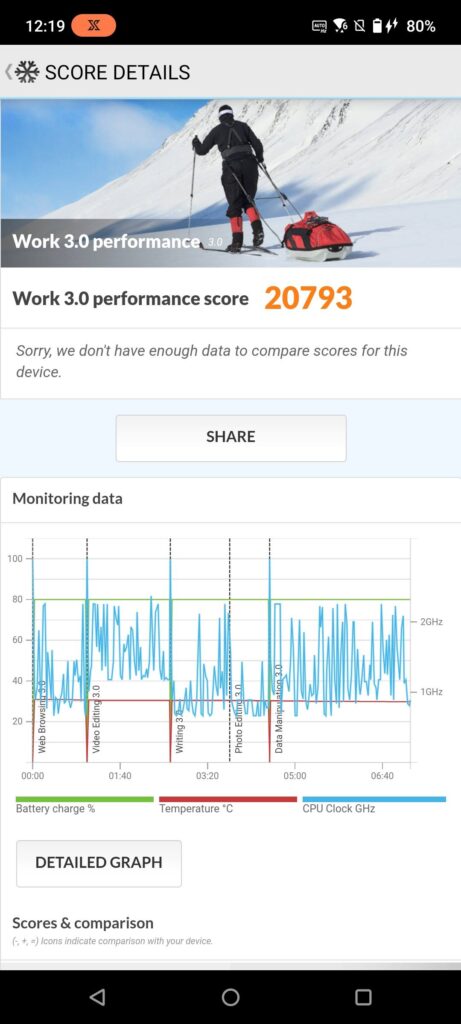
ROG Phone 8 Review – Refined Gaming Flagship Tested
The majority of flagship smartphones in the market typically consider the ability to tackle heavy mobile gaming more as a bonus rather than a primary aspect of its design whereas the ROG Phone series and its latest iteration the ROG Phone 8 put it as the centrepiece of its raison d’etre.
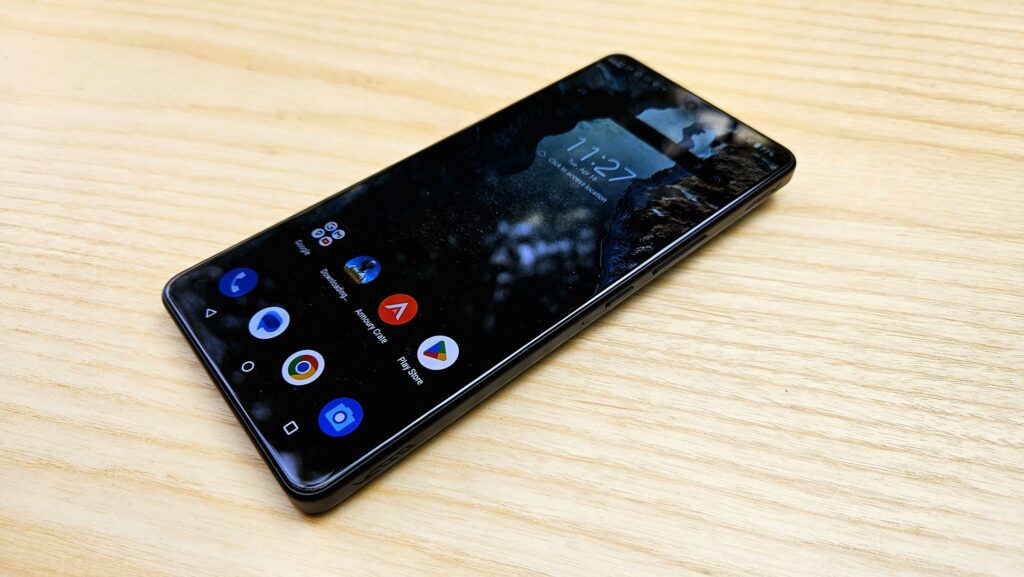
We got our hands on a sample for field testing last month and after racking up quite a few chicken dinners, here’s our ROG Phone 8 review where we share if this flagship gaming phone can give gamers an unfair advantage.
ROG Phone 8 Review – Build and Design
Table of Contents
Since the original ROG Phone made its debut in 2006, its subsequent successors gradually adopted a more gaming oriented outlook culminating in designs that featured elaborate backplates with unique features like cooling vents that work with its AeroActive Cooler attachment, elaborate angular ridges to denote a cyberpunk aesthetic and RGB lighting including a mono LED display in more premium variants.
The ROG Phone 8 strikes a different path than its forebears, shedding much of its cyberpunk gamer aesthetic for a safer looking, more contemporary design with less obvious gamer-centric aesthetics while retaining the vast majority of its unique gaming features.

Comparisons aside, our ROG Phone 8 review unit is thinner than its predecessors and has a more subdued, mainstream look with a mostly flat backplate, rounded corners and aesthetically safe, curved edges though hints of its gaming oriented heritage are there if you look hard.
Fortunately, this return to a more mainstream design also means that it benefits from an IP68 dust and water resistance rating; something its predecessors were unable to achieve on account of a large open ventilation port on the rear backplate.
The backplate of our ROG Phone 8 review sample is done up in a slab of black mirrored glass with an RGB backlit ROG logo glowing on the back though the higher end ROG Phone 8 Pro has a customisable AniMe Visiondisplay instead.
Closer inspection reveals subtle gaming-oriented easter eggs like a GLHF acronym, ROG’s Dare to Win slogan and text that says ‘Est 2006’ on the side. The rear triple camera housing itself is of note here, elevated above the rest of the backplate with a chunky raised housing that fortunately protects the recessed camera array while offering a distinctive look.
Rather than leaving it as an afterthought, Asus has upgunned the rear camera array to a modest degree with 6-axis gimbal hybrid optical image stabilisation for the main 50MP F/1.9 primary camera that stabilises the entire 50MP camera unit in the housing for superior judder-free shots where many competing designs typically just stabilise the lens or sensor.
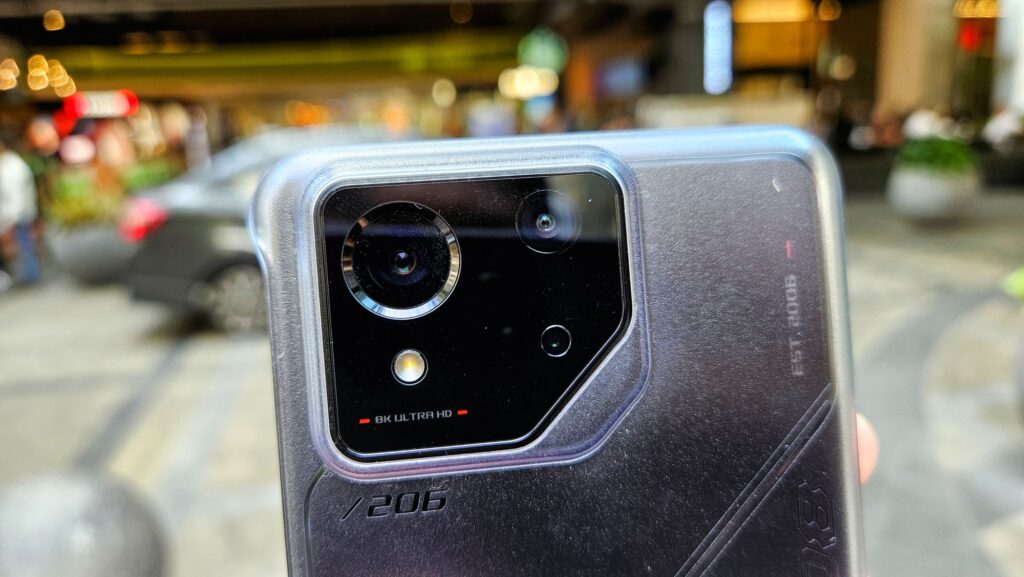
The 13MP ultra wide angle camera and the 5MP macro camera are otherwise similar to the setup used by its predecessor the ROG Phone 7. Surprisingly, the ROG Phone 8’s rear triple camera is capable of 8K@24fps video capture.
You also get a QI-wireless charging coil on the backplate with 15W wireless charging. Unfortunately, the backplate is slippery and is also a fingerprint magnet which makes tossing on the bundled casing a necessity to ensure a firmer grip.
Oddly enough, there are no exact specifications on the glass protecting the backplate but thus far across our review period being toted around in pockets and sling bags aplenty, it hasn’t gotten any scratches thus far.
The right of the phone hosts a pair of haptic shoulder buttons for use when the phone is held in landscape mode along with a volume rocker and power button. On the left side of the ROG Phone 8, you get a side-mounted USB-C port for use during extended gaming sessions that further reinforce its gaming credentials.
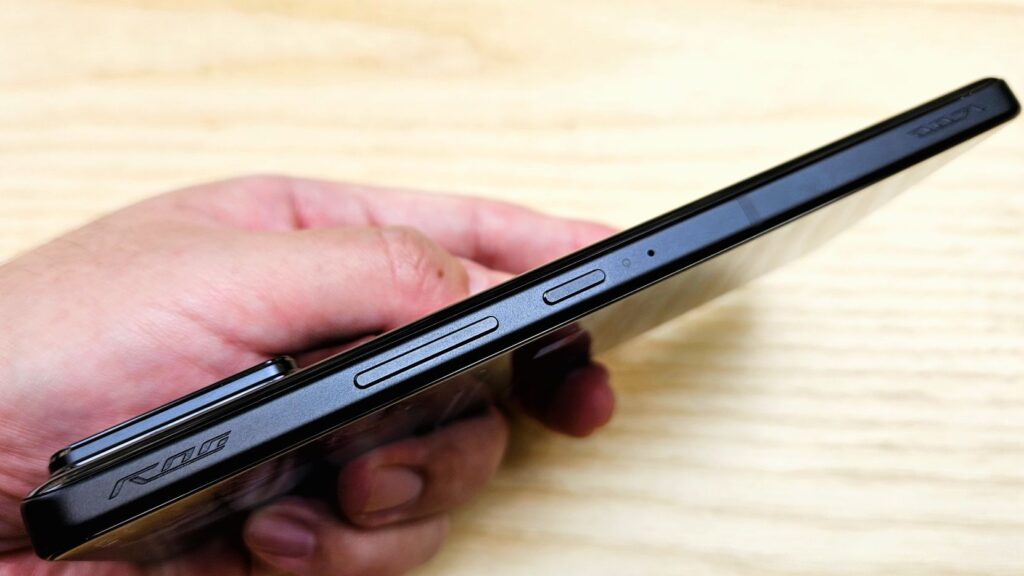
The base of the phone is densely packed, featuring the primary USB-C port for charging, a nano SIM card tray, a grille for one of the two speakers and – surprise – a 3.5mm audio jack! This is arguably the only flagship phone we’ve seen this year with a 3.5mm jack which will please audio traditionalists.
Up front, our ROG Phone 8 review unit packs a flagship-grade 6.78-inch LTPO AMOLED display with a 165Hz refresh rate, 100% DCI-P3, up to 2,500 nits peak brightness as well as the latest Gorilla Glass Victus 2 for protection which is the very same protective glass issued to the Samsung Galaxy S23 series phones. Up top in a tiny slit is an earpiece and speaker along with a front-facing 32MP F/2.5 selfie camera that can snag up to 1080p@30fps video.
Overall build quality is excellent and our ROG Phone 8 review sample felt suitably top-shelf on account of the premium materials used in its construction.
@hitechcentury We unbox the gaming oriented Rog Phone 8 that has flagship-grade hardware, a gorgeous gaming oriented display, shoulder haptic buttons and more to make it a potent mobile gaming platform. #hitechcentury #fyp #sembanggadget #unboxing #techtok #asmr #smartphones #gaming #gamers #rogphone8 #malaysia #samasamabelajar ♬ Sunrise – Official Sound Studio
Bar its somewhat outlandish looking angular camera housing on the rear, the phone looks every bit like a flagship phone. As a nice touch, Asus has also bundled in extra accessories with the ROG Phone 8. Not only do you get a fast 65W charger, you also get a braided USB-C cable and a free casing too which is considered generous these days in an age where flagship phones typically don’t come with any accessories.
ROG Phone 8 Review – Specifications and Benchmarks
Launched alongside the higher end ROG Phone 8 Pro, our ROG Phone 8 review sample runs the same flagship-grade Snapdragon 8 Gen 3 chipset, has the same silhouette and dimensions, has an identical display and battery capacity but differs slightly in that it has slightly less RAM and storage along with a few trifling differences in its camera and the use of an RGB-backlit logo instead of an animated ANiMe Vision matrix display.

A rarer ROG Phone 8 Pro Edition also exists with even more RAM and storage than even the ROG Phone 8 Pro. At present in Malaysia, the ROG Phone 8 costs RM3,499 whereas the ROG Phone 8 Pro costs RM4,799 which is a huge step up in pricing. Here’s how our ROG Phone 8 review unit stacks up on paper…
| Price | RM3,499 |
| Display | 6.78-inch Flexible LTPO AMOLED, 2,400 x 1080 pixels, 107.37% DCI-P3, 1,600 nits high brightness mode, 2,500 nits peak brightness, 1-120Hz refresh rate |
| Processor | Snapdragon 8 Gen 3 |
| OS | Android 14 |
| Memory | 12GB LPDDR5X RAM / 256GB UFS 4.0 storage |
| Cameras | 50MP F/1.9 w/ 6-axis gimbal stabilisation + 13MP F/2.2 ultra wide angle + 5MP F/2.4 macro camera [rear] / 32MP F/2.5 [front] |
| Battery | 5,500mAh w/ 65W wired charging, 15W wireless |
| Size/Weight | 163.8 x 76.8 x 8.9mm /225g |
On its own merits, our ROG Phone 8 review unit has the hardware to easily go toe to toe with any flagship phone. The Snapdragon 8 Gen 3 chipset is the best processor that an Android phone can currently have in the market short of the customised Snapdragon 8 Gen 3 for Galaxy that is specific to the Galaxy S24 series. The provided 12GB LPDDR5X RAM and 256GB UFS 4.0 storage are among the fastest grades of memory available for smartphones.
Where the ROG Phone 8 stands out is that Asus has put considerable effort in creating an effective passive cooling system to vent heat away from the processor and diffused out and across the backplate.To achieve this, they’ve put a copper conductor straight through to the main board that conducts heat out and through to the backplate. According to Asus, this unique design offers 20% better thermal efficiency than conventional solutions.
While the ROG Phone 8 can manage heat effectively on its own, the addition of the optional AeroActive Cooler X attachment helps vent heat more effectively and ensure longer sustained performance.
Under the hood, Asus runs the latest Android 14 and guarantees 2 years of OS updates and 4 years of security updates which unfortunately pales compared to competing flagship phones which often have 4 years and in the case of some competitors, 7 years of OS updates.
Asus also includes their Armoury Crate software that allows you to kick in a high-performance X mode where the CPU gets cranked up to near its full potential.
Unfortunately, you’ll need the AeroActive Cooler X attachment for it to truly get clocked to maximum performance as doing otherwise without a cooling fan may throttle the processor performance. When set to X mode, our ROG Phone 8 review sample scored the following:
| 3D Mark Wild Life Extreme | 5,199 |
| 3D Mark Wild Life Extreme Unlimited | 5,184 |
| 3D Mark Solar Bay | 8,678 |
| 3D Mark Solar Bay Unlimited | 8,718 |
| 3D Mark Wild Life | Maxed Out |
| 3D Mark Wild Life Unlimited | 19,553 |
| Geekbench 6 Single Core | 2,167 |
| Geekbench 6 Multi Core | 6.524 |
| Geekbench 6 OpenCL | 14,547 |
| Geekbench 6 Vulkan | 16,659 |
| PCMark Work 3.0 | 20,793 |
| PCMark Battery Life | 10 hours 24 mins |
In terms of performance, our ROG Phone 8 review unit is among the best on test even compared to its contemporaries packing the same processor on account of its unique cooling system that offers better sustained performance under load. In the 3D Mark Solar Bay stress test, it managed to get 94.9% stability which is excellent, all things considered with an 8,690 best loop score and 8,249 for its worst loop score while temperatures were kept between 36°C – 44°C.
When subjected to gaming, the ROG Phone 8 did not disappoint. In X mode, the phone was able to handle the likes of Genshin Impact on high settings and brute force its way through Warzone Mobile and Diablo Immortals also on high settings without issue.
The addition of the Armoury Crate app also allows for additional customisation and elaborate gaming macros which can take some of the drudgery out of repetitive tasks in gaming. Needless to say, it manages to easily crunch through normal tasks like web browsing, emails and the usual like a hot knife through butter.
The addition of the shoulder haptic triggers also offers a measured advantage, especially in FPS shooters as you can assign additional tasks like aiming down sights for easier shooting and using items.
It takes a bit of practice to get used to the haptic feedback and getting it to work requires a bit of effort as you have to set up the initial macros yourself. It would have been nice for ROG to have preset profiles for games so gamers needn’t have to perform this drudgery.
The 6.78-inch LTPO AMOLED display is excellent, offering superb colour rendition and detail even in daylight conditions. The 165Hz refresh rate isn’t fully supported by all games though and most of the time it defaults to 60Hz for most games. Response times on the display were excellent and there was no discernible lag in tested games.
One unfortunate sacrifice with the implementation of a more mainstream design with the ROG Phone 8 is its speaker placement.
While prior designs had the luxury of forward-facing speakers, the new redesign means a more asymmetrical placement with one downward firing and one forward firing speaker in keeping with the majority of mainstream flagship phones though it still does a solid job. Sound is relatively loud and detailed with fair bass for games and music though it pales to its predecessors.
Battery life was acceptable though a bit on the short side, averaging 10 plus hours with X mode on in benchmarks. On a full charge, you’re looking at four or five plus hours of intensive gaming without recharging though the phone does offer pass-through charging and its side-mounted USB-C port means that you can comfortably continue gaming for hours on end if you’re parked next to a plug point.
If you eschew intensive gaming and stick to work related tasks, the phone can comfortably handle a full day of use with a top-up at the end of the day.

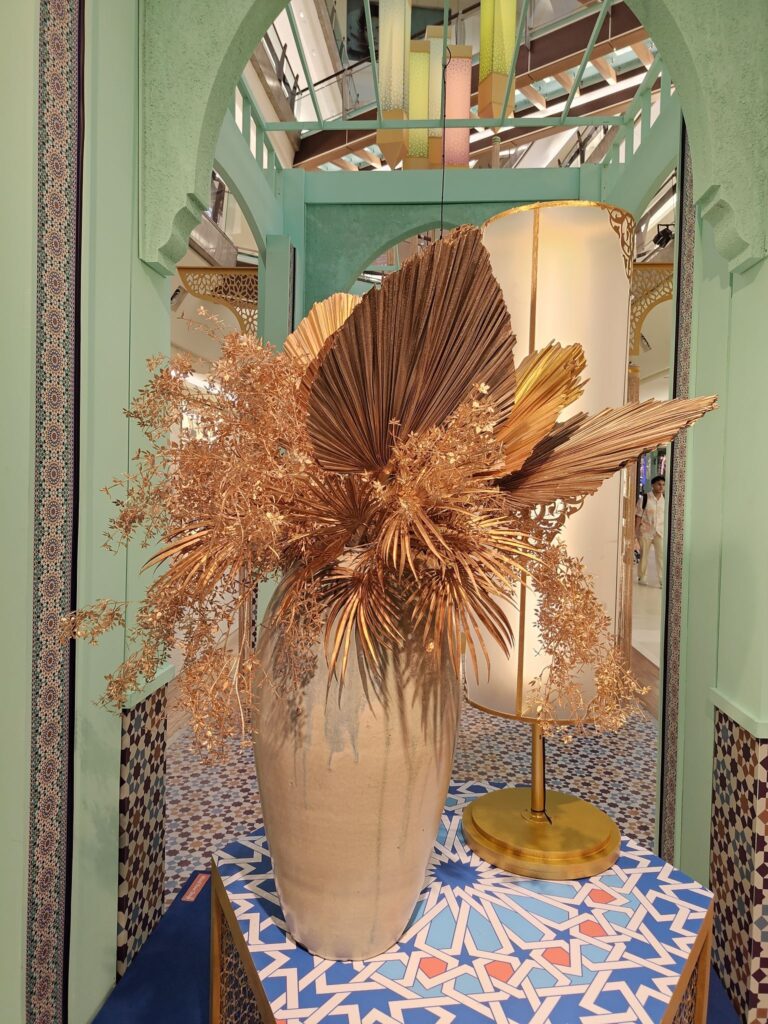
Of note is the improved primary 50MP rear camera on the phone. If you stick to the main camera and up to 2x zoom, you’re able to get some pleasingly good shots on account of the 6-axis gimbal and OIS belying its gaming pedigree.
Shots look their best in daylight though the main camera is a dab hand at dimly lit scenarios too. Unfortunately, ultrawide and macro modes are underwhelmingly average at best and the front selfie camera is functional for video calls and the odd selfie or two.
Should I buy the ROG Phone 8?
The ROG Phone 8 is an interesting flagship phone design that hosts a number of unique gaming-oriented features like haptic shoulder-buttons, a 3.5mm audio jack, a side-mounted USB-C port and an effective cooling system.

The limitation of just 2 Android OS upgrades bears consideration for potential buyers but if you prioritise gaming performance and features in a flagship phone, the ROG Phone 8 is in a league of its own.
It is highly deserving of a Gold award on its own merit as a gaming flagship phone though the inevitable comparisons to competing phones in its own league and price range make it a very solid Silver depending on which side of the fence you’re coming from. In any case, it’s a solid choice for many users seeking value and an edge in gaming.
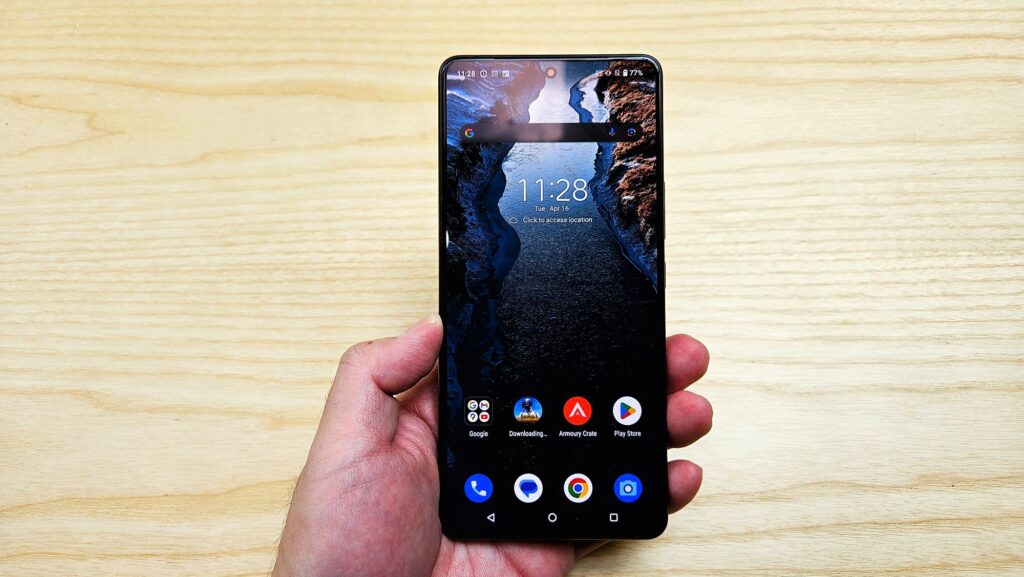
ROG Phone 8 review unit courtesy of ROG Malaysia. For more details and to purchase please visit https://rog.asus.com/my/phones/rog-phone-8/spec/
ROG Phone 8
-
Display
-
Performance
-
Cameras
-
Battery Life
-
Value
ROG Phone 8
The ROG Phone 8 is in the running as one of the best gaming phones of 2024 that is adept at both gaming and work in equal measure. While it sheds its gaming-oriented design, it does not skimp on performance and gaming-oriented features including its side-mounted USB-C port, shoulder-mounted Air Trigger haptic buttons and unique convection cooling design. It is also one of the few flagship phones with a 3.5mm audio jack, marking it out as an exceptional rarity among other flagship phones.
Pros
Excellent quality display Superb gaming performance Generous accessories bundled in the box Has a 3.5mm audio jack Shoulder haptic buttons offer enhanced functionality
Cons
Finish and display is a fingerprint magnet Base unit doesn’t ship with AeroActive Cooler


